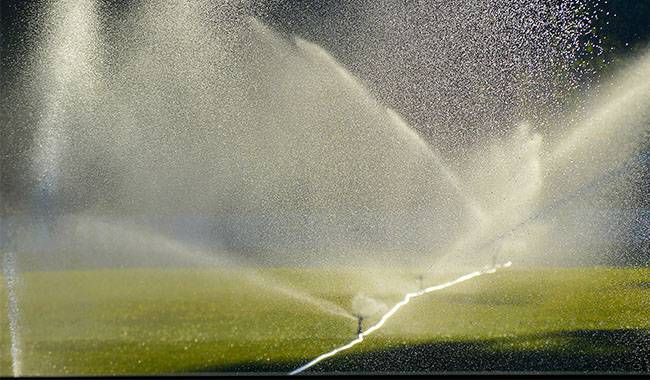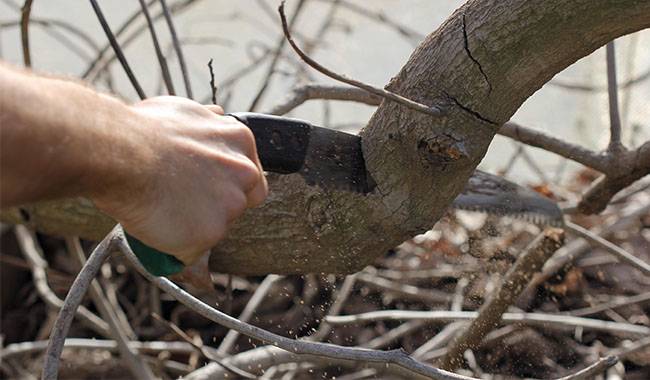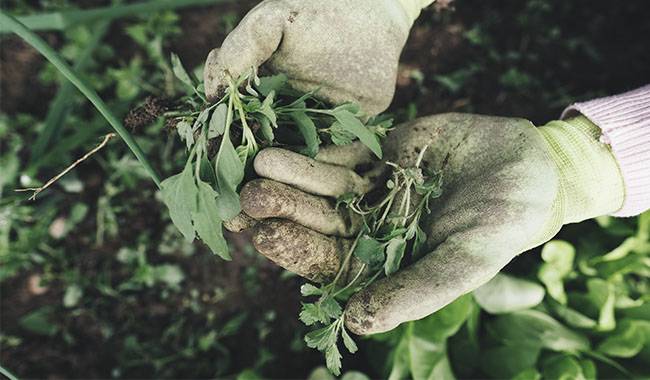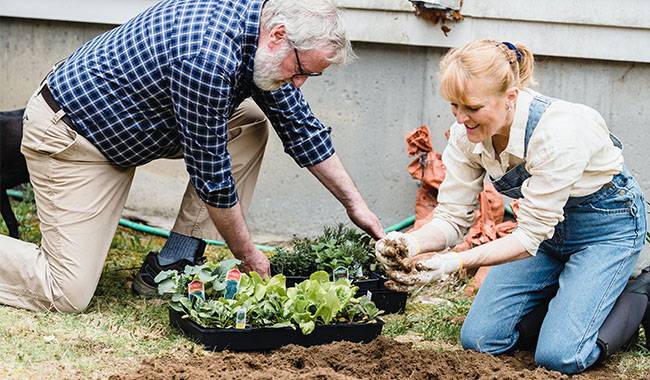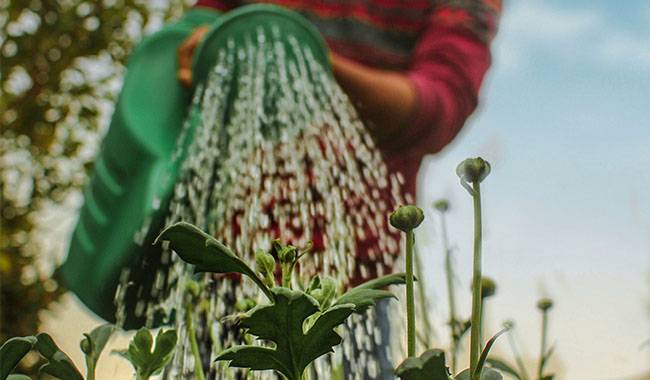
Without water, plant life would not be possible. Moisture enables them to nourish themselves by absorbing substances dissolved in the soil through their roots, and they also absorb pure water. Only when there is enough water in the soil can we obtain a good harvest, ensure the normal vital functions of the plants, prolong the flowering period, etc. However, too much water in the soil and air, as well as too much fertilizer, can negatively affect most plants, up to and including fungal infections or root rot, which can lead to plant death. We will explain the basic watering your garden mistakes, timing, and water rates for different crops in this ThumbGarden article.
Watering in hot weather
Never water any vegetable plants during the hottest part of the summer because it is really hot. The only exception is plants that grow in the shade, but usually, there are very few such plants in the vegetable garden. Watering in hot weather, first of all, evaporates the water from the surface of the soil rather quickly, and secondly, no matter how carefully you water, small droplets of water will fall on the leaves, and under the influence of the sun, these droplets literally boil on the leaves, creating burns. These burns are the gateway to infection.
Cold (ice cold) water
Often, gardens are completely watered by a hose, in which case the water becomes very cold after a few seconds. This can be a real shock to plants, and while leathery trees and shrubs can tolerate such watering, sensitive vegetables can even curl their leaves as if they had a light frost.
Try to water your garden with water heated to room temperature, not hot water of course. It’s not complicated: you can set up a large bucket (or several) at least 20 inches (50 cm) high on the plot, paint it (them) black, connect the hose to the faucet and fill the bucket with water. The water will warm up during the day and you can water it at night.
Also, you will get standing water, and if you put the bucket under the roof drain and cover it with a net to keep debris out, you will get rainwater that is perfectly fine for watering your garden (aerating), and it’s free, too.
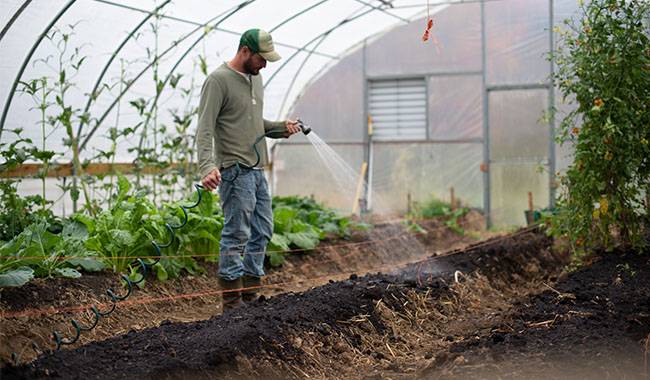
Powerful jets
Another mistake: gardeners not only use hoses to water their gardens, but also use powerful water jets. Some people explain this by the fact that the water penetrates the soil faster and does not spread on the surface. But watering in this way does more harm than good. Pressurized water can strongly erode the soil, exposing the roots. If left uncovered, they will dry out and the plants will suffer (and may even die). The best irrigation solution is to use a hose – the water should flow by gravity, not under pressure, so the roots don’t get washed away.
Lack of timely leaf watering
In fact, it is best not to over-water and to water only according to the weather conditions. For example, if it is moderately humid with cloudy skies, it is best not to water the leaves of your plants, but if it is hot during the day, you can give your plants a “rain shower” in the morning to rejuvenate them.
By the way, it is better to sprinkle water in the early morning than in the evening. Sprinkling in the evening will keep water on the leaves for a long time, creating the most favorable environment for fungal infections to develop. If you sprinkle in the morning, just a little before 4 a.m., the water will slowly evaporate as the air gradually warms up under the rising sun and will not cause any damage to the leaves.
Watering the crusts of the soil
If the vegetable garden has not been watered for several days and a crust has formed on the surface of the soil, you should always break it up with the tip of a hoe before watering. If you do not do this, the water will not be absorbed into the soil immediately, but a large amount of water will spread over the surface of the soil. This will firstly lead to a large loss of water and secondly, may result in overwatering of the soil in depressions where there may be insufficient water elsewhere.
Insufficient or excessive uptake of water
As we have written many times before, everything needs to be regulated. Under- or over-watering can result in insufficient water and mediocre droughts that starve plants, or conversely, over-watering and root rot and outbreaks of fungal diseases.
Water your garden so that the soil is saturated at least 4-6 inches (10-15 cm) – this is the rooting zone for most vegetable crops. Depending on the soil type, you should water between one and three buckets per 11 square feet (1 square meter); obviously, the looser the soil, the less water is needed at a time, but the more water evaporates from the soil, so the watering itself should be more frequent (and vice versa).
A Large amount of watering with long intervals
This is very common in the suburbs. We come in once a week in the summer, flood the whole garden in a big way, turn it into a swamp, and then leave it for a week and let it go completely without water for that period of time. When the water runs out, it evaporates the next day or two and the garden dries out for four or five days. This is not good, it is actually a shock to the plant: there are a lot of nutrients and water and then no water at all; this leads to reduced immunity, disease outbreaks, poor quality fruit, etc.
Such watering is generally dangerous during the fruit ripening period: after a long drought, you decide to do a lot of watering, a lot of water enters the fruit, and the fruit cracks. To avoid all these phenomena, it is better to use drip irrigation.
It is simple and efficient – take a bucket, lift it half a meter on a brick, insert the drip tip (pipe with holes), pour the water into the bucket, and place the drip tip around the vegetable garden, bringing it to the plants. After that, you can go home safe in the knowledge that one hundred-liter bucket of water will likely be enough for a week for a six-acre vegetable garden, and that the watering will be even and thorough. You can water your garden gradually over the weekend, a little in the morning and a little in the evening so that the water is evenly absorbed by the soil.
Watering without mulching
Gardeners often dump the water in the morning and forget about the vegetable garden. In the morning, the water evaporates and the plants actually dry out until the next watering. In order to fully saturate the soil with water, it is recommended to water in the evening and to spread the mulch on the soil surface afterward. A one-centimeter thick layer of humus, or if not available, regular soil that is just dry, can be used as a mulch. This layer of mulch will prevent water evaporation and will stay on the roots longer so that the plant will not lack water until the next watering.
Lack of watering after fertilization
After the application of mineral fertilizers or dry ashes, the soil must be watered so that the fertilizer components do not evaporate during the day, but penetrate the soil more quickly. The best way to do this is to loosen the soil, then water it by simply wetting it, then apply the fertilizer, pour a few liters of water under each plant, and finally cover the fertilizer with soil, thus incorporating it into the moist soil.
Watering without observing the time and norms
Gardeners often make this mistake out of ignorance, watering all vegetable crops in the same way and at the time they (the gardener) feel appropriate. To fill in the knowledge gap on watering, we have prepared a spreadsheet detailing watering times and watering amounts for the most common vegetable crops.
Watering Times and Watering Amounts for Different Crops
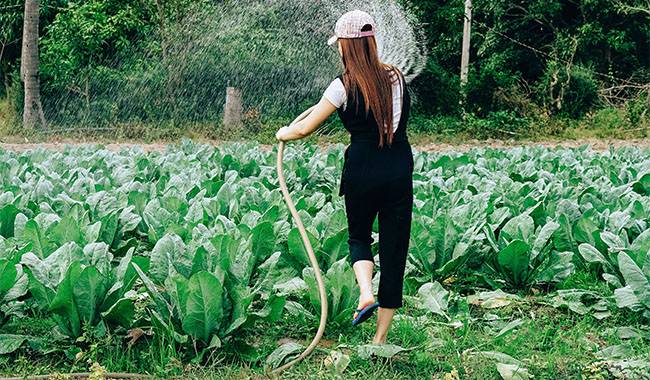
Early cabbage
- The capacity of the root system is medium.
- Watering period is from May to July.
- The frequency of watering is 5 times.
- Watering time – at planting, three days later, then once a week, depending on rainfall.
- Watering rate, 8-9 gals/11 sq ft or 30-35 liters/1 sq m.
- Water consumption per kg of harvest, 2.4 gals (9 liters).
Late season cabbage
- The capacity of the root system is medium.
- The watering period is from May to August.
- Watering frequency is 10 times.
- Watering rate, 9-12 gals/11 sq ft or 35-45 liters/1 m2.
- Water consumption per kg of the crop, 3 gals (11.3 liters of water).
Early cucumber
- Strong roots and strong foliage.
- The watering period is from May to August.
- The frequency of watering is 7 times.
- watering time – first watering – when two to three true leaves are formed, second and third watering – at the germination period, at the one-week interval, fourth and fifth – at the flowering period, at five days interval, sixth and seventh – at the fruiting period, at six days interval.
- Watering rate, 6.6-8 gals/11 sq. ft. or 25-30 liters/1 sq. m.
- Water consumption per kg of harvest, 3 gals (11.3 liters of water).
Late cucumber
- Strong root system and heavy foliage.
- The watering period is from May to September.
- The frequency of watering is 9 times.
- watering time – first watering – during the formation of two or three leaves, second and third watering – at the germination stage, at five-day intervals, fourth and fifth watering – at the flowering stage, at four-day intervals, from the sixth to the ninth day – at the fruiting stage, at five-day intervals, depending on the rainfall.
- Watering rate, 6.6-9 gals/11 sq ft or 25-35 liters/1 m2.
- Water consumption per kg of the crop, 0.26-4 gals (l – 15 liters of water).
Onion (seeds in the ground)
- The strength of the root system is very weak.
- The watering period is from May to August.
- The number of watering is 9 times.
- watering time – first – at the first breakthrough (thinning), second watering – after a week, third watering – at the second thinning, fourth to ninth – during the growth of the bulb, with an interval of five days depending on the rainfall.
- Watering rate, 6.6-9 gals/11 sq. ft. or 25-35 liters/1 sq. m.
- Water consumption per kg of the crop, 0.26-3.4 gals (l – 13 liters of water).
Sprouting tomatoes
- The power of the root system is strong.
- The watering period is from June to August.
- The number of watering is 8 times.
- The first watering should be done when the seedlings are planted, the second – at the stage of germination, the third and fourth – at the stage of flowering with an interval of three days, and the fifth – when the fruits begin to form, and from the sixth to the eighth – when the fruits begin to ripen and be harvested with an interval of three or four days, depending on the rainfall.
- Watering rate, 9-10.5 gals/11 sq ft or 35-40 liters/1 m2.
- Water consumption per kg of the crop, 0.26-3.7 gals (l – 14 liters of water).
Tomatoes without seedlings
- The power of the root system is strong.
- The watering period is from May to August.
- The number of watering is 7 times.
- Watering time – the first watering – after weeding, the second – during germination, the third and fourth – during flowering with an interval of three days, the fifth – during fruit formation, the sixth and seventh – during the beginning of ripening and the beginning of fruit harvest.
- Watering rate, 8-9 gals/11 sq. ft. or 30-35 liters/1 sq. m.
- Water consumption per kg of the crop, 0.26-3 gals (l – 11.3 liters of water).
Peppers
- Medium capacity of the root system.
- Watering period is from May to September.
- The frequency of watering is 10 times.
- Watering time – first watering – when planting seedlings, second watering – during germination, third to fifth watering – during flowering with an interval of four days, sixth and seventh watering – during fruit formation with an interval of one week, eighth to tenth watering – during fruiting with an interval of three days.
- Watering rate, 8-9 gals/11 sq. ft. or 30-35 liters/1 sq. m.
- Water consumption per kg of the crop, 0.26-5 gals (l – 20 liters of water).
Eggplant
- Strong roots and strong foliage.
- Watering period is from May to September.
- The frequency of watering is 10 times.
- watering time – first watering – when the seedlings are planted, second watering – at the germination stage, third to fifth watering – during flowering, at an interval of five days, sixth and seventh watering – during fruit formation, at an interval of one week, eighth to tenth watering – during fruiting, at an interval of four days.
- Watering rate, 9-10.5 gals/11 sq. ft. or 35-40 liters/1 sq. m.
- Water consumption per kg of the crop, 0.26-5.8 gals (l – 22 liters of water).
Carrots
- The root system is strong.
- The watering period is from May to September.
- The frequency of watering is 5 times.
- watering time – the first watering is related to after weeding, from the second to the fifth – during the formation and growth of root crops, with an interval of five days depending on the rainfall.
- Watering rate, 8 gals/11 sq ft or 30 liters/1 sq m.
- Water consumption per kg of harvest, 2.1 gals (8 liters of water).
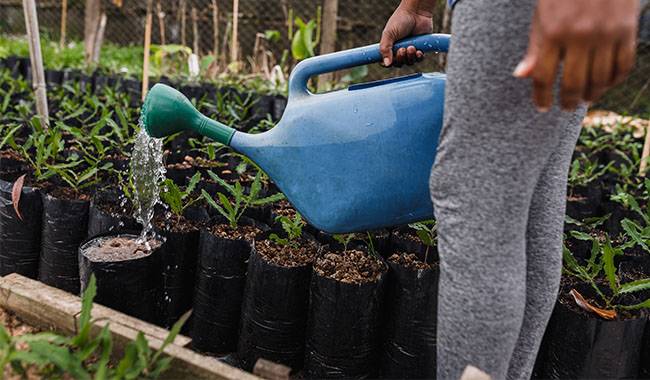
Beet
- The root system is very weak.
- The watering period is from May to August.
- The number of watering is 5 times.
- time of watering – the first watering is related to the post-thinning period, from the second to the fifth – during the formation and growth of root crops, with an interval of four days, depending on the rainfall.
- Watering rate, 9 gals/11 sq ft or 35 liters/1 sq m.
- Water consumption per kg of harvest, 2.4 gals (9 liters of water).
Spring-sown potatoes
- The root system is very weak.
- The watering period is from May to September.
- The frequency of watering is 4 times.
- Watering time – first watering – during germination, second watering – during flowering, third and fourth watering – during tuber sprouting, once a week depending on rainfall.
- Watering rate, 9-10.5 gals/11 sq. ft. or 35-40 liters/1 sq. m.
- Water consumption per kg of harvest, 2.1 gals (8 liters of water).
Potatoes for summer planting
- The root system is very weak.
- The watering period is from May to September.
- The frequency of watering is 6 times.
- Watering time is the first, second and third after germination – after germination with an interval of four days, the fourth – at the stage of germination, the fifth and sixth – at the stage of tuber formation with an interval of one week, depending on the rainfall.
- Watering rate, 10-12 gals/11 sq. ft. or 40-45 liters/1 sq. m.
- Water consumption per kg of the crop, 0.26-2.6 gals (l – 10 liters of water).
Of course, you should always use the weather as a guide. For example, if it is raining heavily and you are about to water your plants, you don’t have to water them at all; if it is raining lightly for a short time, you should definitely water them because this rain will only soak the topsoil and the soil in the root zone will remain dry.
To sum up
That’s all the garden watering mistakes we want to tell you about. If you have any more questions, feel free to ask them in the comments and we’ll be sure to answer them. If you know of any other watering mistakes, please write them in the comments as well, it would be very useful for our readers!




